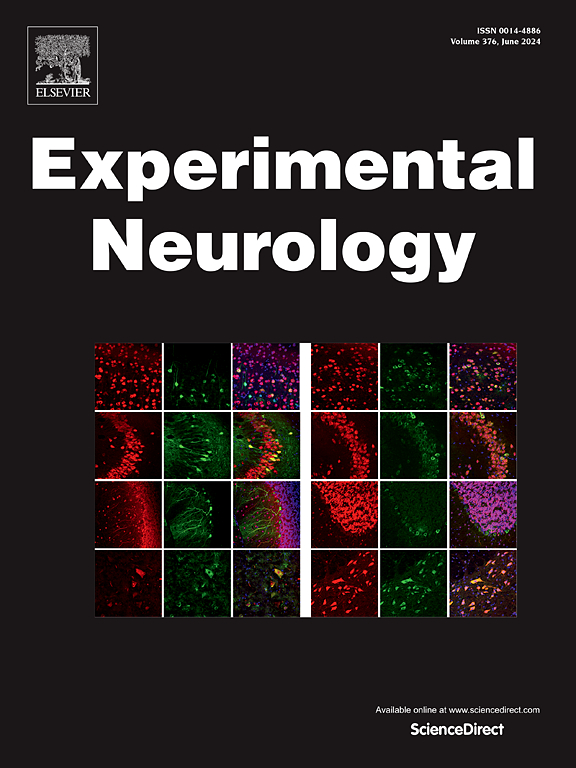Neuronal mechanisms underlying activation of locomotor network by epidural electrical stimulation of the spinal cord
IF 4.6
2区 医学
Q1 NEUROSCIENCES
引用次数: 0
Abstract
Epidural electrical stimulation of the spinal cord (ES) is used to restore/improve locomotor movements in patients. However, the neuronal mechanisms underlying activation of locomotor networks by ES are unknown. Here, we analyzed the effects of ES on the activity of individual spinal neurons of different functional locomotor groups. Neuronal activity was recorded in decerebrate cats before and during ES that evoked locomotion. During ES initial period (NW-period, before the locomotion onset), the activity was increased in most neurons as compared to that before ES. We found that ES-caused activation of neurons of locomotor network to the average level similar to that observed during locomotion is not sufficient for initiation of locomotion. We demonstrated that the onset of ES-evoked locomotion was associated with specific changes in the activity of individual neurons within functional locomotor groups and in their responses to epidural stimuli. With the locomotion onset, there was a trend for individual neurons with extremely high activity during NW-period to decrease their activity, while for neurons with extremely low activity to become more active. Also, in neurons contributing to generation of a specific mode of locomotion, peaks and troughs in responses to individual epidural stimuli were significantly less pronounced as compared with those observed during NW-period. We suggest that these changes allow ES to maintain the high level of excitability of the locomotor network necessary for its operation without distortion of the locomotor rhythm. The obtained results advance our understanding of the neuronal mechanisms underlying activation of locomotor network by ES.
求助全文
约1分钟内获得全文
求助全文
来源期刊

Experimental Neurology
医学-神经科学
CiteScore
10.10
自引率
3.80%
发文量
258
审稿时长
42 days
期刊介绍:
Experimental Neurology, a Journal of Neuroscience Research, publishes original research in neuroscience with a particular emphasis on novel findings in neural development, regeneration, plasticity and transplantation. The journal has focused on research concerning basic mechanisms underlying neurological disorders.
 求助内容:
求助内容: 应助结果提醒方式:
应助结果提醒方式:


